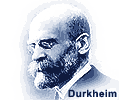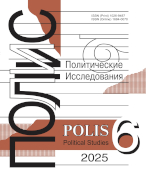World of Faith and World of Disbelief:
Expansion and Reduction of Religiosity
Baranovsky V.G.,
Academic Director, Center for Situation Analysis, Primakov National Research Institute of World Economy and International Relations (IMEMO), Russian Academy of Sciences, baranovsky@imemo.ru
elibrary_id: 627742 | ORCID: 0000-0002-7283-0244 | RESEARCHER_ID: J-3439-2017
Naumkin V.V.,
President, Institute of Oriental Studies, Russian Academy of Sciences, director@ivran.ru
elibrary_id: 71351 | RESEARCHER_ID: R-9576-2019
DOI: 10.17976/jpps/2018.06.02
Baranovsky V.G., Naumkin V.V. World of Faith and World of Disbelief: Expansion and Reduction of Religiosity. – Polis. Political Studies. 2018. No. 6. https://doi.org/10.17976/jpps/2018.06.02
The growing prevalence of religious commitment and the advancement of secularism are the two parallel tendencies, though in confrontation with each other, that underlie the contemporary world development. In many parts of the world, including its Islamic segment, there is an expansion of the “Zone of Disbelief”. However, simultaneously, a process of some sort of religious renaissance is underway, which is related to the need of reviewing the routine socio-ecclesiastical values and behavioral stereotypes, likewise the search of a spiritual dimension, so typical of our high-tech reality. One of such tracks invokes an appeal to the traditional religions or a formation of new religious trends. In this context, especially given the exacerbating conditions of other problematic aspects pertinent to the societal development, the most versatile and staggering “discharges” become highly likely. The rampage of right-wing and left-wing extremism is periodically in evidence across the political spectrum in Europe and Latin America. Also, in some parts of the Islamic world, and not only in the Middle East, a powerful impetus is given to religious radicalism, which entails largely dramatic and broad-ranging consequences. Controversial tendencies linked to the religious factor are woven into the not-less-controversial fabric of globalization. While objectively creating the prerequisites for a dialogue of religions, likewise for rapprochement of various denominations within one and the same religious doctrine, at the same time it overshadows their conserving, identifying function. And this forms a part of the resistant reaction of society through revitalization and activation of particularism. The religious world is confronted with the erosion of values and their desecration. A dual process of expansion and-reduction is in place – when the quantity indicators of the area of religiousness can be on the increase, while its quality indicators can be subject to readjustment. Although in certain religious traditions, inner heterogeneity remains a serious factor of tension (the Sunnis-the Shiites), overall, the World of Faith is becoming less rigid – including in connection with the perception of elements belonging to other cultures and customs. Similar tendencies are witnessed in the World of Disbelief. The reasons and prospects for the ongoing upsurge of radicalism in the Middle East should be viewed within the context of more fundamental and longer-term processes underway both regionally and globally. And, by all means, with due account for the vigorous, but contradictory globalization trends, as well as apparently inexhaustible relevance of religious factors for the evolution of society.
References
Agadzhanyan A. Buddizm v sovremennom mire: myagkaya al’ternativa globalizmu [Buddism in Contemporary World: Mild Alternative to Globalism]. – Religii i globalizatsiya na prostorakh Evrazii [Religion and Globalization on the Vast Spaces of Eurasia]. Ed. by A. Malashenko, G. Filatov. Moscow: Neostrom. 2005. P. 222-255. (In Russ.)
Al-Yaqoubi Sh.M. Refuting ISIS. Second edition. Herndon, Virginia, USA: Sacred Knowledge. 2016. 152 p.
Arakeri A. Tibetans in India – The Uprooted People and their Cultural Transplantation. New Delhi: Reliance Publishing House. 1998. 487 p.
Armstrong K. Polya krovi: religiya i istoriya nasiliya [Fields of Blood: Religion and the History of Violence]. Moscow: Alpina non-fiction. 2016. 538 p. (In Russ.)
Armstrong К. Islam – A Short History. A Modern Library Chronicles Book. New York: The Modern Library. 2002. 272 р.
Bektimirova N., Lipilina M., Simoniya A. Izbiratel’nye sistemy i elektoral’nye protsessy v stranakh Indokitaya na sovremennom etape [Electoral Systems and Processes in the States of Indochina at the Contemporary Stage]. Moscow: Tezaurus. 2016. 281 p. (In Russ.)
Gerecht R. The Wave: Man, God, and the Ballot Box in the Middle East. Stanford: Hoover Institution Press. 2011. 181 p.
Kam E. The Islamic State Surprise: The Intelligence Perspective. – Strategic Assessment. 2015. No. 8. P. 21-31.
Kaplan R. The Return of Marco Polo’s World: War, Strategy and American Interests in the Twenty-First Century. New York: Random House. 2018. 304 p.
Krause P. A State, an Insurgency, and a Revolution: Understanding and Defeating the Three Faces of ISIS. – The Future of ISIS: Regional and International Implications. Ed. by Feisal al-Istrabadi, Sumit Ganguly. Washington, D.C.: Brookings Institution Press. 2018. P. 223-246.
Kuznetsov V. The Post-Secular Age of the Neomodern in the Middle East. – State, Religion and Church in Russia and Worldwide. 2017. Vol. 35. No. 3. P. 85-111. (In Russ.)
Lane E.W. Arabic-English Lexicon. Volume one. Cambridge: The Islamic Texts Society.1984. 1487 p.
Leonard М. Divided World: The Struggle for Primacy in 2020. L.: Center for European Reform. 2007. 54 p.
Mohammedou M.M. A Theory of ISIS. Political Violence and the Transformation of the Global Order. L.: Pluto Press. 2017. 272 p.
Naumkin V. Blizhnii Vostok v mirovoi politike i kul’ture [The Middle East in the World Politics and Culture]. Moscow: IV RAN. 2011. 376 p. (In Russ.)
Naumkin V. Islam i musul’mane: kul’tura i politika [Islam and Muslims: Culture and Politics]. Moscow, Nizhny Novgorod: Medina. 2008. 767 p. (In Russ.)
Roy O. The Failure of Political Islam. L., New York: I.B. Tauris Publishers. 1994. 256 p.
Shukla A., Dikshit V. Tibetan Buddhism – Past and Present. – Himalayan and Central Asian Studies (Journal of Himalayan Research and Cultural Foundation). 2009. Vol. 13. No. 1. P. 43-53.
See also:
Habermas J.,
Religion, law and politics. – On political justice in a multicultural World-Society. – Polis. Political Studies. 2010. No2
Mirsky G.I.,
Islam and a Nation: the Near East and Central Asia. – Polis. Political Studies. 1998. No2
Grinin L.Ye., Korotayev A.V.,
Political Aspects of Contemporary Islamism. – Polis. Political Studies. 2019. No6
Malakhov V.S., Letnyakov D.E.,
Religious Politics of Post-Soviet States: Between Path Dependence and Governmentality. – Polis. Political Studies. 2021. No4
Malakhov V.S., Letnyakov D.E.,
Shimmering Secularism: Religion in Russian Public Space. – Polis. Political Studies. 2020. No1




.jpg)






 print
print
.jpg)
.jpg)